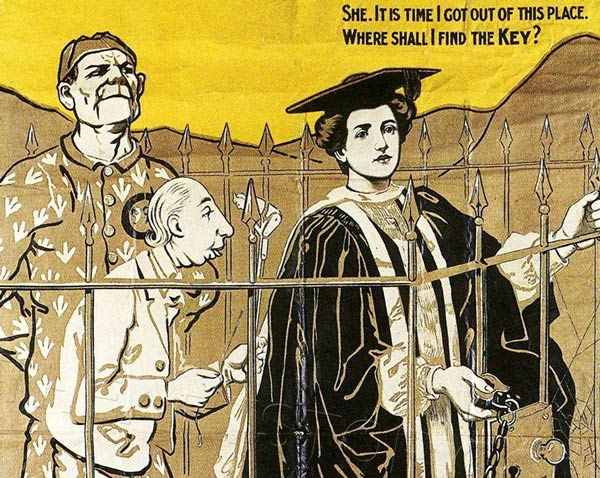
As the UK commemorates 100 years since (some) women were given the right to vote, Dr Diane Urquhart considers how 'representative' the 1918 Representation of the People Act was.
In a speech delivered at Hyde Park, London, 1913, Dora Mellone of the Irish Women’s Suffrage Federation explained that the organisation comprised:
...all shades of political opinion, we have nationalists and unionists, orange and green, extremist and moderate…no one else has ever done this; the Irish Women’s Suffrage Federation is the only political organisation which has ever held the North and South [of Ireland] together
Yet, the suffrage movement was a controversial, diverse and, at times, divided movement. In Ireland there were over 30 suffrage bodies with varying political regional and religious differences.
Suffragette militancy caused further disunity: between 1912 and 1914, 35 women were imprisoned for militant acts in Ireland and their use of hunger striking in an attempt to gain political prisoners status provided an influential model for later republican prisoners.
The Representation of the People Act was passed by Westminster in February 1918 whilst the First World War was on-going. Enfranchising 8.4 million women in the UK who were over the age of 30 and graduates or fulfilled the requisite property qualifications, the act was rightly lauded as historic.
Equal suffrage was not, however, attained as men could vote at the age of 21 or 19 if they had served in the armed forces.
The act was also presented as a reward for female war work, but this denied the agency and, at times, state defiance of the suffrage movement which was active from the 1860s.
Sinn Fein’s Constance Markievicz was the first women elected to Westminster, but following her party’s abstentionist policy she did not take her seat. In the interwar period women made up between 1-2% of the elected representatives in Westminster, Dail Eireann (the Irish Parliament) and the Northern Ireland Parliament. The 'Representation of the People Act' was therefore the start of a process to establish electoral equality rather than an end.